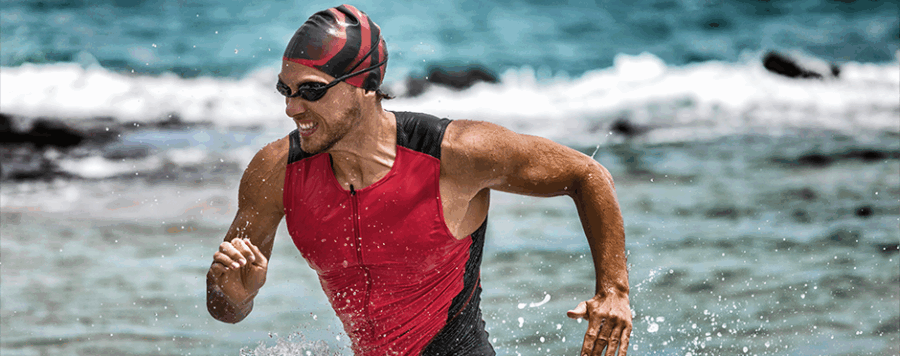1. Foot and Ankle Stability
Cycling and running require a high demand from the foot and ankle. It is recommended that triathletes perform stability and single-limb stance exercises to ensure their ankles can sustain the training load and avoid injuries. On the flip side, swimming requires a high degree of flexibility from the foot and ankle, so keeping your calves and ankles loose can allow for a more natural swim kick.
2. Shoulder Prehab
Swimming requires great shoulder strength, and triathletes typically spend more of their training completing freestyle and/or breaststrokes, resulting in muscle imbalances. Strengthen shoulder external rotators is important to avoid overuse injuries. Grab a set of resistance bands and spend 5-10 minutes post-swim session avoiding injuries and improving your swim technique.
3. Core Stability
Although the base of swim, bike, and run training does develop some inherent core strength, it is important to have 5-10 minutes of a dedicated core routine. Activities such as dynamic planking, bird dogs, and dead bugs can promote great core control, improve force transfer, and allow for stronger cycling and hill running.
4. Mental Training
Endurance training requires a great deal of mental strength, which is built during both low-endurance training and high-intensity strength training. To perform at your highest level, you need to trust your body to complete hard and challenging tasks. By participating in a regular strength training program, such as weighted step-ups or lunge walks, you be confident that your legs can handle the hilly climbs or uneven terrain underfoot.
Triathlon training can be quite time-consuming, and adding strength training to the routine can be challenging. However, a few 10–15-minute sessions a week can reduce injury risk, facilitate recovery, and optimize performance. If you are unsure where to start, reach out to your local Athletico to help you stay safe and healthy on the racecourse!
*Per federal guidelines, beneficiaries of plans such as Medicare, Medicaid, Tricare, VHA and other federally funded plans are not eligible for free assessments.
The Athletico blog is an educational resource written by Athletico employees. Athletico bloggers are licensed professionals who abide by the code of ethics outlined by their respective professional associations. The content published in blog posts represents the opinion of the individual author based on their expertise and experience. The content provided in this blog is for informational purposes only, does not constitute medical advice and should not be relied on for making personal health decisions.
Rebecca Pudvah was a physical therapist at Athletico Physical Therapy at the time of this blog.

 width="900"
height="356"
>
width="900"
height="356"
>
